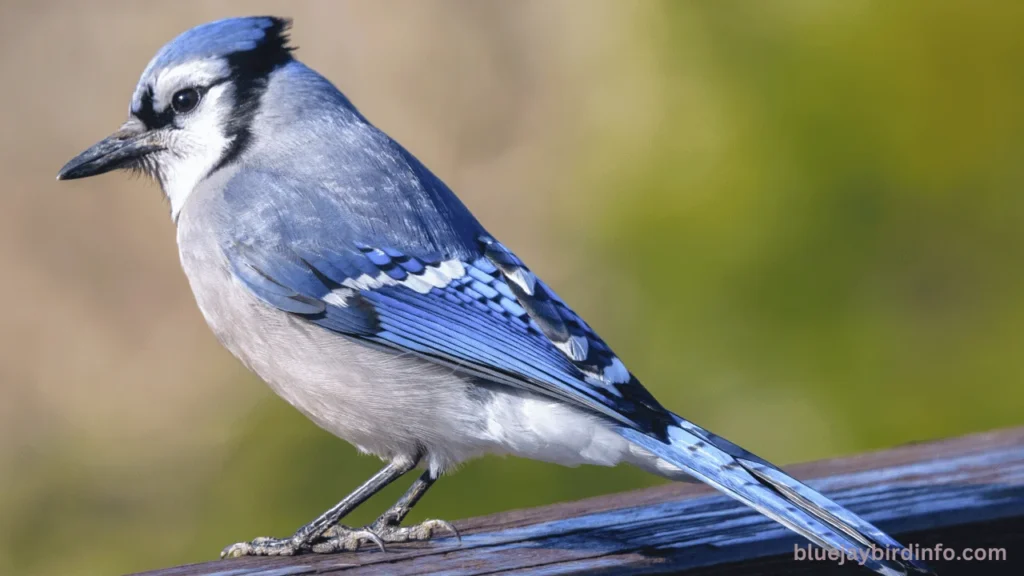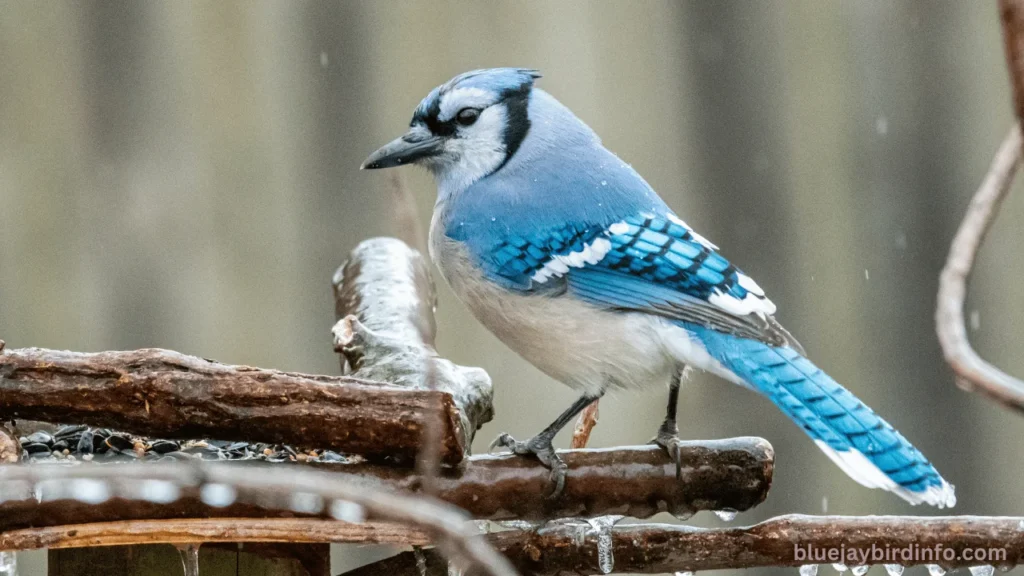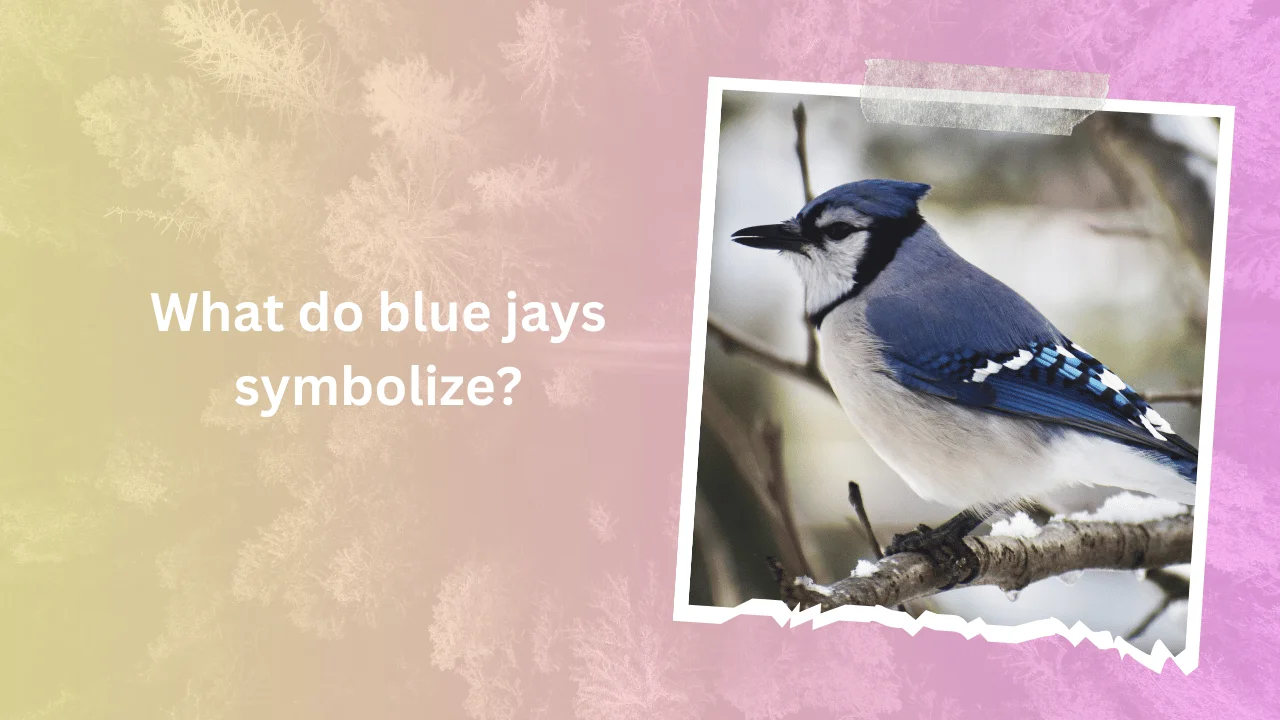With their striking blue plumage and distinctive calls, blue jays are more than just beautiful birds flitting through our backyards—they hold deep symbolic significance in various cultures and traditions.
Many people have encountered the vibrant flash of a blue jay, but few pause to consider the meaning behind this fascinating creature. In folklore and mythology, blue jays have often been seen as messengers, embodying the spirit of communication and the conveyance of important messages from the natural world to humanity.
Their intelligence and adaptability further enhance their reputation, leading many to see them as symbols of resourcefulness and determination.
Blue jays have been imbued with symbolic meanings across different cultures and time periods. For some, they represent loyalty and the importance of community, as they are known to live in family groups and support one another.
For others, their vibrant blue color evokes feelings of tranquility and inner peace, reminding us of the beauty and calmness found in nature. This article will explore the various interpretations and symbolism associated with blue jays, offering insights into how these birds connect to our own lives and experiences.
Understanding the symbolism of blue jays requires appreciating their natural habitats and ecological roles. Found in forests, woodlands, and suburban areas throughout North America, blue jays are not only important players in their ecosystems but also serve as cultural touchstones for many societies.
Birds, in general, have long held symbolic significance, often representing freedom, perspective, and the spiritual connection between the earth and the heavens. In particular, the vibrant blue color associated with blue jays has been interpreted in different ways across cultures, often signifying trust, loyalty, and even divine guidance.
As we delve into the rich tapestry of meanings behind these remarkable birds, we’ll uncover how blue jays continue to resonate with people around the world.
Contents
- 1 Cultural Symbolism
- 2 Symbolic Meanings
- 3 Historical and Literary References
- 4 Personal Interpretations
- 5 Modern Interpretations
- 6 Conclusion
- 7 FAQ’s
- 7.1 What do blue jays symbolize?
- 7.2 How do personal experiences shape interpretations of blue jay symbolism?
- 7.3 What role do blue jays play in their ecosystems?
- 7.4 How have modern influences affected blue jay symbolism?
- 7.5 Are there specific cultural beliefs associated with blue jays?
- 7.6 What literary references include blue jays?
Cultural Symbolism
The cultural significance of blue jays varies widely across different societies and traditions, often reflecting the unique values and beliefs of the communities that revere them.
In many Indigenous cultures of North America, blue jays are seen as messengers between the earthly and spiritual realms. Their loud calls and striking appearance have led to the belief that they carry important messages from the spirit world, serving as guides or protectors for those who encounter them.
In some stories, blue jays are depicted as cunning tricksters, symbolizing intelligence and adaptability, which highlights the bird’s resourcefulness in overcoming challenges.
In folklore, blue jays often embody the spirit of communication. For example, in certain tales, they are believed to convey warnings or news about impending changes, making them vital figures in the narratives of various cultures.
This role as a messenger is not only a testament to their vocal abilities but also signifies the importance of paying attention to the natural world and its signs. In some traditions, blue jays are also associated with loyalty and protection, symbolizing the bonds of family and community as they often travel and feed in groups.
Various mythologies and religions have their own interpretations of blue jays, further enriching their symbolic significance. In some Native American tribes, the blue jay is regarded as a spiritual protector, guiding and watching over families and communities.
Similarly, in certain Eastern philosophies, the blue color of the jay is associated with peace and tranquility, linking the bird to higher spiritual states and the pursuit of harmony.
As we explore these cultural narratives, it becomes clear that blue jays are not just ordinary birds; they hold a rich tapestry of meanings that continue to resonate across generations and cultures.
Symbolic Meanings
Blue jays are imbued with a variety of symbolic meanings that reflect their unique characteristics and behaviors. Often associated with freedom, these birds are known for their ability to fly long distances and adapt to different environments.
This sense of liberation resonates with those who see blue jays as reminders to embrace their own freedom and pursue their passions.
Additionally, blue jays are celebrated for their intelligence; they are among the most intelligent birds in North America, known for their problem-solving skills and ability to use tools.
This sharp wit has led many to view blue jays as symbols of cleverness and resourcefulness, encouraging individuals to tap into their own intellect and adaptability.

The theme of communication is another prominent aspect of blue jay symbolism. Their loud calls and complex social interactions make them natural symbols of expression and connection. Many cultures view blue jays as messengers that convey important messages, urging people to listen closely to their intuition and the signs around them.
This emphasis on communication can also extend to the idea of being honest and forthright, as blue jays are known to defend their territory and assert themselves in social situations.
However, the meanings attributed to blue jays can vary widely depending on cultural context, personal experiences, and individual interpretations.
For instance, someone who has fond memories of watching blue jays in their childhood may associate them with nostalgia and comfort, while another person might interpret their aggressive behavior toward other birds as a symbol of conflict or competitiveness.
The characteristics and behaviors of blue jays—such as their striking appearance and assertive nature—can significantly influence how they are perceived. Ultimately, the multifaceted symbolism of blue jays invites each observer to reflect on their own experiences and emotions, making these birds not only remarkable creatures but also powerful symbols that resonate on personal and cultural levels.
Historical and Literary References
Throughout history, blue jays have appeared in folklore, poetry, and mythology, often embodying the rich symbolism associated with their striking appearance and behavior.
In various Indigenous cultures, blue jays are frequently featured in stories that emphasize their role as messengers or tricksters, highlighting their intelligence and the lessons they impart.
For instance, many Native American tales recount how blue jays communicate with the spirit world, serving as guides for individuals seeking wisdom and clarity. Such historical references have significantly shaped our understanding of blue jay symbolism, associating them with spirituality and the interconnectedness of life.
In literature, blue jays have often been used as symbols of freedom and expression. Poets and writers have drawn upon the bird’s vibrant color and assertive nature to evoke feelings of inspiration and vitality.
Notably, prominent literary figures such as Emily Dickinson and John James Audubon have included blue jays in their works, celebrating their beauty and the messages they convey. These references not only enrich the symbolism of blue jays but also illustrate their role as a source of fascination for artists and thinkers across time.
The impact of cultural exchange and globalization has further diversified the symbolism of blue jays. As people from different backgrounds share their interpretations and stories about blue jays, the meanings associated with these birds continue to evolve.
In contemporary society, blue jays are often embraced as symbols of resilience and adaptability, reflecting a global understanding of their significance beyond local folklore. This exchange enriches the tapestry of blue jay symbolism, allowing for a more nuanced appreciation of these remarkable birds as they capture the hearts and imaginations of people around the world.
Personal Interpretations
The symbolism of blue jays can vary greatly from person to person, shaped by individual experiences, beliefs, and emotions.
For many, encountering a blue jay may evoke feelings of hope and inspiration, serving as a reminder of the beauty and resilience found in nature.
Those who have had positive encounters with blue jays—perhaps watching them flit through the trees during a difficult time—might interpret these birds as symbols of guidance, providing comfort and reassurance when needed most.
Their vibrant blue feathers and lively calls can brighten a day, leading individuals to associate them with joy and positivity.
Personal interpretations are also influenced by the concept of serendipity and coincidence. A chance encounter with a blue jay during a pivotal moment in someone’s life can lead to profound connections and meanings.
For instance, if a person sees a blue jay while contemplating an important decision, they might interpret it as a sign to follow their instincts or to embrace change.
These moments of synchronicity can reinforce the belief that blue jays are more than just birds; they become signs from the universe, encouraging individuals to pay attention to their surroundings and the messages they may carry.
Ultimately, the symbolism of blue jays is deeply personal, allowing individuals to connect with these birds on a meaningful level. Whether viewed as harbingers of good fortune, messengers of important truths, or simply as delightful companions in nature, blue jays resonate with a wide range of emotions and interpretations.
This dynamic relationship between the observer and the observed enriches our understanding of the natural world and the personal significance that these remarkable birds can hold in our lives.
Modern Interpretations
In recent years, the symbolism of blue jays has evolved significantly, reflecting contemporary values and concerns. With the rise of popular culture and social media, blue jays have become increasingly recognized not only for their beauty but also for their intelligence and unique behaviors.
Social media platforms have allowed for the sharing of personal experiences and photographs, bringing attention to these remarkable birds and fostering a sense of community among bird enthusiasts.
As people engage with blue jays online, they often share stories of their encounters, amplifying their symbolic meanings as messengers of joy, freedom, and connection.
Additionally, the growing emphasis on environmental awareness has influenced how we perceive blue jays and other wildlife.
As more individuals become attuned to the delicate balance of our ecosystems, blue jays are often seen as symbols of conservation and the need to protect natural habitats. Their role as seed dispersers highlights their importance in maintaining healthy ecosystems, prompting many to advocate for their protection.
In this context, blue jays can symbolize the fight for biodiversity and the urgent need for sustainable practices that ensure the survival of various species, including themselves.
As we navigate modern challenges related to climate change and habitat loss, the potential for blue jays to become icons of environmental protection grows stronger. They represent not just the beauty of nature, but also the critical connection between all living beings.
By embracing the symbolism of blue jays as champions of conservation, we can inspire collective action towards preserving our natural world, ensuring that future generations can enjoy the vibrant presence of these birds in their own backyards.
Through this lens, blue jays take on a renewed significance, urging us to reflect on our relationship with nature and our responsibility to protect it.

Conclusion
In conclusion, the symbolism of blue jays encompasses a rich tapestry of meanings that reflect their unique characteristics and behaviors. We explored various cultural interpretations, from their roles as messengers and protectors to their representation of freedom and intelligence.
Personal experiences also play a significant role in shaping how individuals interpret blue jays, with many seeing them as symbols of hope, inspiration, and guidance.
As we’ve seen, modern influences such as popular culture and environmental awareness have further evolved the significance of these birds, turning them into icons of conservation and a call to protect our natural world.
The diversity and richness of the symbolism associated with blue jays remind us of the interconnectedness of all living beings.
As these remarkable birds continue to inspire wonder and reflection, they encourage us to look deeper into our relationships with nature and each other.
The meanings we attribute to blue jays can offer insight into our own lives, guiding us toward greater understanding and appreciation of the natural world.
I invite you to share your own experiences and interpretations of blue jay symbolism. Whether you have fond memories of watching them in your backyard or have encountered them during significant moments in your life, your stories can foster a sense of community and shared understanding.
Together, we can celebrate the vibrant presence of blue jays and the profound connections they inspire.
Also, read other articles related to Blue Jay Habits!
FAQ’s
What do blue jays symbolize?
Blue jays symbolize various qualities such as freedom, intelligence, communication, and protection across different cultures.
How do personal experiences shape interpretations of blue jay symbolism?
Individual encounters with blue jays can evoke unique feelings and meanings, leading people to see them as symbols of hope, guidance, or even nostalgia.
What role do blue jays play in their ecosystems?
Blue jays are important as seed dispersers and can help control insect populations, contributing to overall biodiversity.
How have modern influences affected blue jay symbolism?
Popular culture, social media, and increased environmental awareness have evolved their symbolism, often connecting blue jays to conservation and the importance of protecting natural habitats.
Are there specific cultural beliefs associated with blue jays?
Yes, blue jays are viewed as messengers or spirits in many Indigenous cultures, embodying communication between the earthly and spiritual realms.
What literary references include blue jays?
Blue jays have appeared in works by poets and writers like Emily Dickinson and John James Audubon, often symbolizing beauty, freedom, and inspiration.








